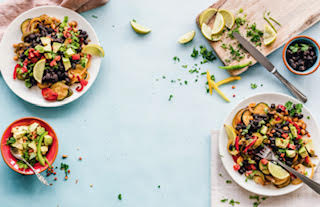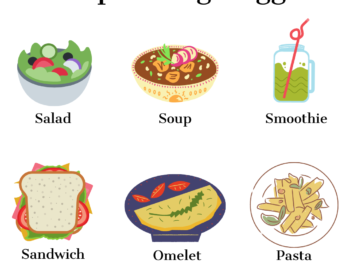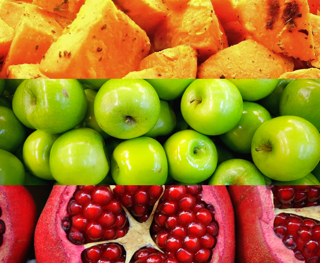Hello
The new year is a time many of us set goals and resolutions with regards to our health and our weight. It is also a time when “new year, new you” themed articles and books are released. As a nutritionist coaching client on healthy eating and weight loss, I’ve seen, too often, that this time of year is filled with lofty goals and unrealistic plans which may do more harm than good.
Every January, U.S. News & World Report reviews and rates the Best Diets with input from an expert panel of health professionals. As a member of the panel, I help to evaluate the best – and worst – diets, for weight loss, heart health, gut health, brain health, diabetes and other conditions. We evaluated how easy the diet is to follow, its ability to produce both short-term and long-term weight loss, and its nutritional completeness, among other issues.
It’s worth explaining that a “diet” is not necessarily a fad but rather consists of the foods and drinks you consume on a regular basis. This eating plan is generally created with a reason, for example to lose weight, lower your cholesterol or regulate your blood sugar.
Diets vary tremendously, and some are healthier than others. Some diets feature a plant-based lifestyle, while others promote a low-carbohydrate one.
HERE and below, I discuss what makes a diet healthy.
Following a healthy diet is about nourishing your body with a variety of nutrients that support your overall health and well-being. At its core, a balanced diet includes food from all the major food groups – fruits, vegetables, whole grains, protein sources, dairy (or dairy alternatives) and healthy fats – to ensure your body receives essential nutrients.
Here are key points on what makes a diet healthy to help select a plan that works for you throughout the entire year.
Key Takeaways
- A healthy diet is more than a temporary plan. It should be sustainable, nutritious, and easy to follow for long-term success.
- Nutrient-dense foods from every food group, including fruits, vegetables, whole grains, protein, dairy (or alternatives) and healthy fats, provide essential health benefits, help manage weight and support the prevention of chronic disease.
- Portion control, rather than strict calorie counting, is important for effective weight management and balanced nutrition.
- A diet that aligns with your goals, lifestyle and preferences will be practical, enjoyable and feasible over time.
What Makes a Diet Healthy?
The foods you eat should provide you with nutrients for good health. Aim to include foods from each food group to ensure a balanced intake of vitamins, minerals and other beneficial nutrients.
While you may lose weight on a diet without any grains, that doesn’t make it healthy. Diets that limit carbohydrates, for example, are often low in fiber. Diets containing a lot of red meat are often high in saturated fats, which can increase the risk for heart disease.
A healthy diet should:
- Contain ample fruits and vegetables
- Include whole grains
- Add healthy fats
- Involve healthy sources of protein
- Reduce disease risk
- Be easy to follow
- Avoid calorie counting and complicated preparations
- Inspire healthy living and improve overall well-being
Fruits and Vegetables for Healthy Eating
Research shows that the healthiest diets are rich in fruits and vegetables, which are associated with a lower risk of:
- Cardiovascular disease
- Hypertension
- Certain cancers
- Diabetes
Fruits and vegetables are high in vitamins, minerals, antioxidants and fiber while being relatively low in calories. All non-starchy fruits and vegetables can be part of a healthy diet, so if you like one fruit or vegetable over another, enjoy it.
Because fruits and vegetables are low in calories, you can enjoy a bigger portion without worrying about weight gain. For optimal health and for reducing disease risk, aim for an assortment of colorful fruits and vegetables, which will contain different nutrients and antioxidants.
Whole Grains Reduce Disease Risk
Many diet plans call for cutting out grains, including whole grains, particularly if you want to lose weight. However, whole grains are rich in nutrients and fiber, which are associated with a lower risk of chronic disease and support a healthy digestive system.
Whole grains include these foods:
- Oatmeal
- Soba noodles
- Brown rice
- Millet
- Whole wheat breads, pastas and cereals
- Barley
- Spelt
According to the Dietary Guidelines for Americans, at least half of the grains you eat every day (3 servings or ounce equivalents) should be whole grains. This would amount to around ½ cup cooked oatmeal, a slice of whole wheat bread, and ½ cup cooked brown rice.
Healthy Fats to Include in Your Diet
A healthy diet includes healthy sources of fats, including:
- Olive oil
- Avocado
- Nuts
- Seeds
Dietary fats are necessary for maintaining good health, and they provide energy, protect your organs, support cell growth, and help you absorb fat-soluble nutrients.
Guidelines advise that 20%–35% of calories come from fats, mostly unsaturated fats, with no more than 10% of total calories coming from saturated fats. However, because fats are calorically dense (they contain 9 calories per gram compared to protein and carbohydrates, which have 4 calories per gram), practicing portion control is important; aim for 1 tablespoon of olive oil to dress your salad or enjoy ¼ cup of nuts as a snack.
Protein as Part of a Healthy Diet
Protein is important for growth and development and to help your body repair cells and make new ones. A healthy diet should include these sources of protein.
- Plant sources of protein, including beans, peas, nuts, seeds and soy
- Lean meat sources of protein, including fish, chicken, turkey and eggs
Red meat should be consumed in moderation as it is high in saturated fat and associated with a greater risk for heart disease. It’s also best to meet your protein needs with whole foods instead of protein supplements.
Diets for Reducing Disease Risk
Regardless of whether you are looking to maintain your weight or lose a few pounds, the best diet is one that can minimize your risk of diet-related chronic diseases like heart disease, diabetes and hypertension.
Such a diet would include plenty of fruits and vegetables, healthy starches including whole grains and starchy vegetables, lean sources of protein including plant proteins and healthy, unsaturated fats.
A Healthy Diet Should Be Easy to Follow
While the nutrients a diet provides are important for good health, high on the list is how easy the diet is to follow. It should:
- Recommend flexible choices along with diverse foods
- Be family-friendly
- Allow for meals to be eaten at home or in a restaurant
If a diet plan is overly restrictive or complicated, it is unlikely that you will be able to stick to it for the long haul.
All too often, diets promote overly complicated food preparation or scientific theories or require tedious calorie counting. These diets are rarely able to be followed for long and often lose focus on the most important piece, which is creating a plan with a balance of whole foods rich in nutrients.
To continue reading about the best diets for healthy eating in US News & World Report, click HERE.
Lisa
Lisa R. Young, PhD, RDN
Would you like help cultivating healthier habits? reducing your risk of disease? managing your portions? eating and living more mindfully? incorporating more healthy plant-based meals? … and tips for eating a little better this year? I’m happy to assist. I am currently offering VIRTUAL NUTRITION COACHING & COUNSELING. I can reached HERE to discuss your unique needs to set up a free 15-minute discovery call.⠀
PS: Want a gift for the new year keeping self care, health, fitness and happy vibes in mind? Enjoy some of my favorite AMAZON PICKS in health & wellness. And… add some of these to your wish list this year.





 Incorporate more vegetables into your diet
Incorporate more vegetables into your diet